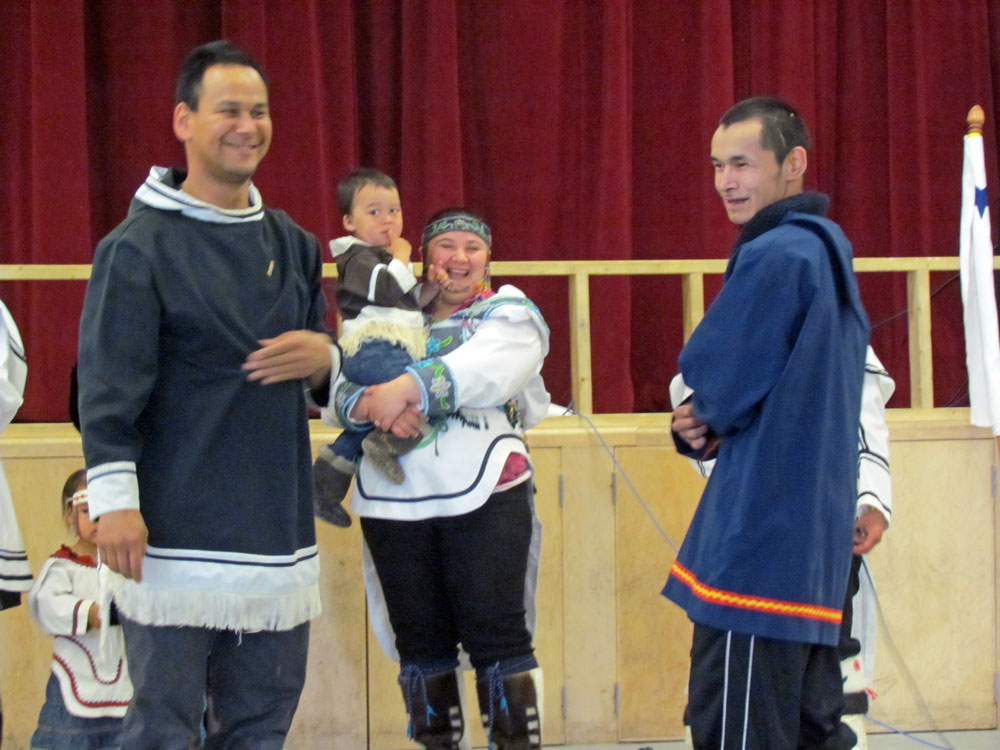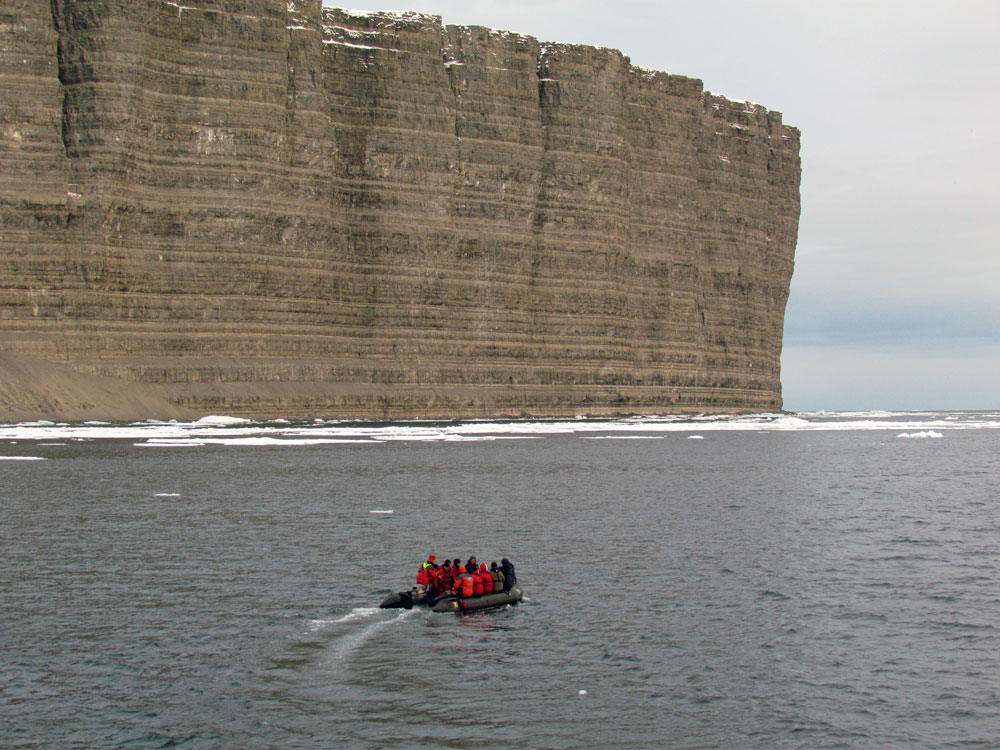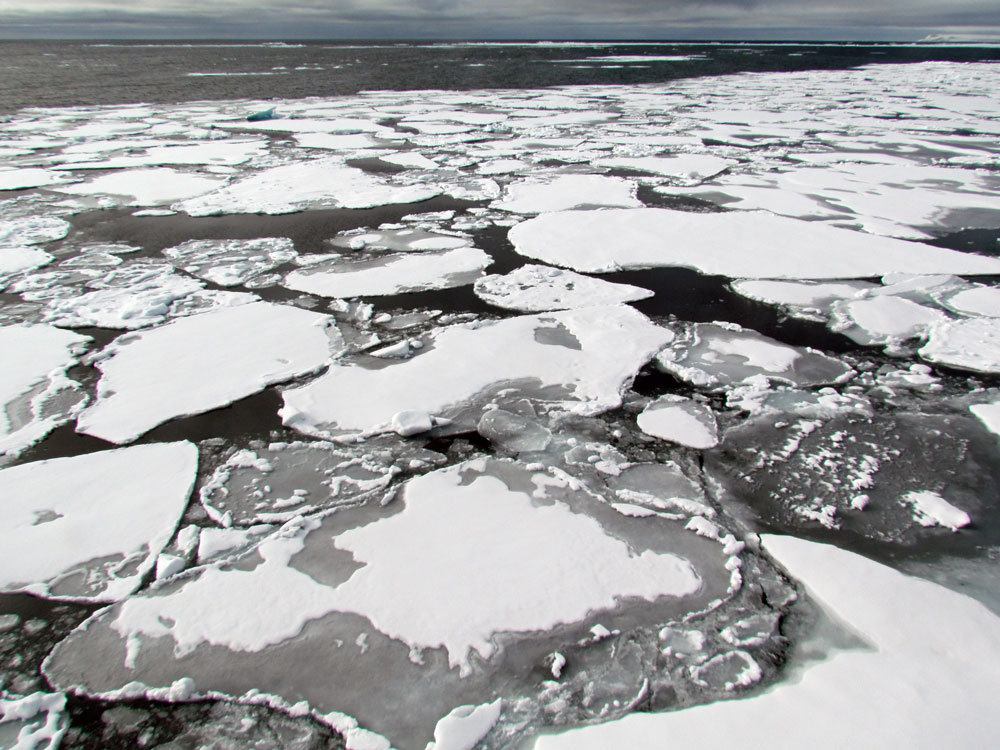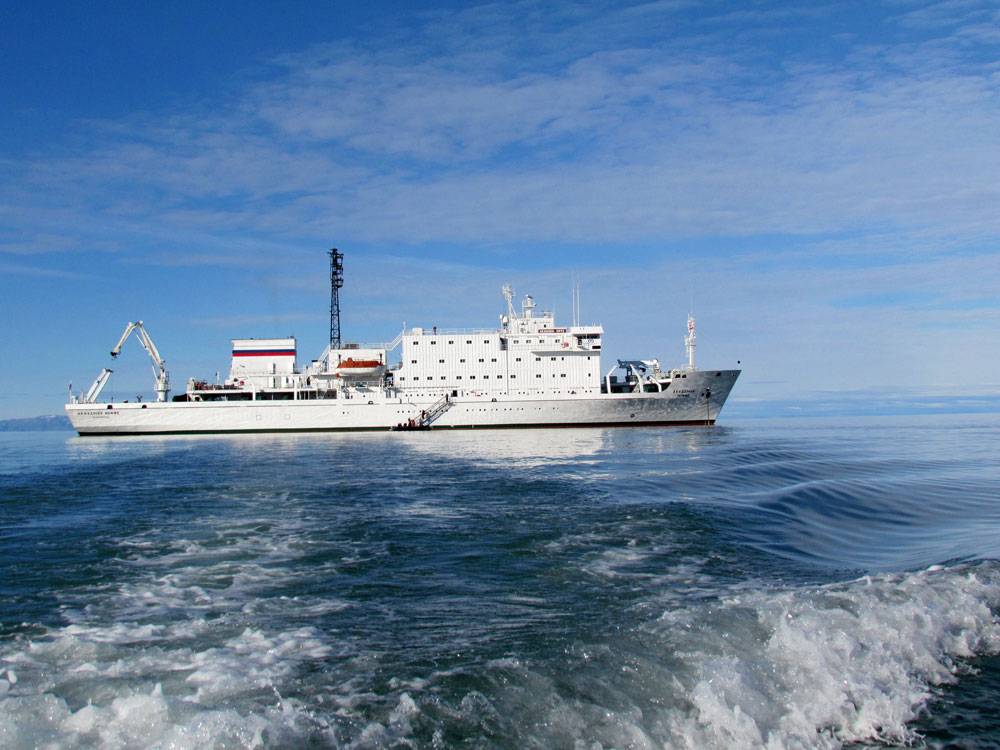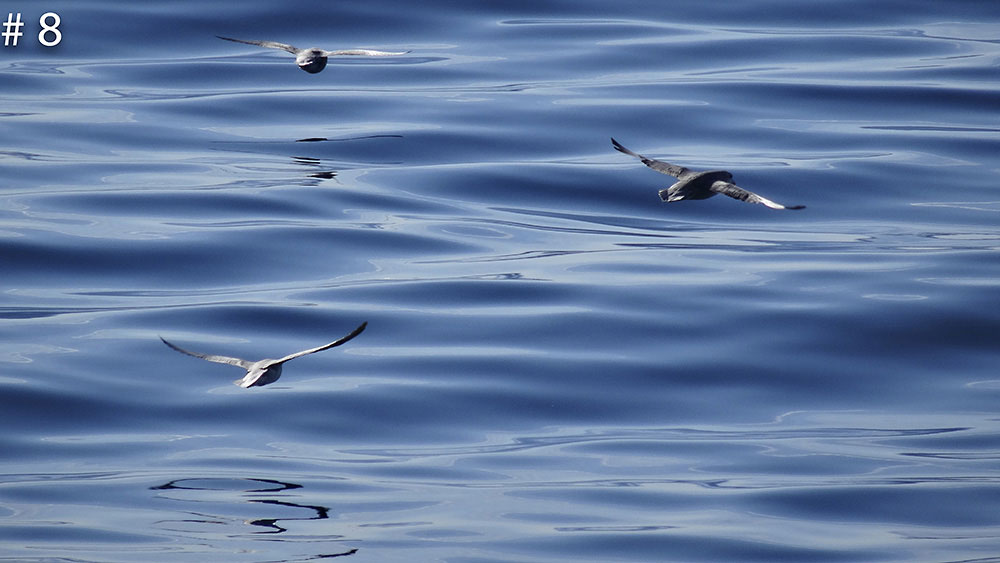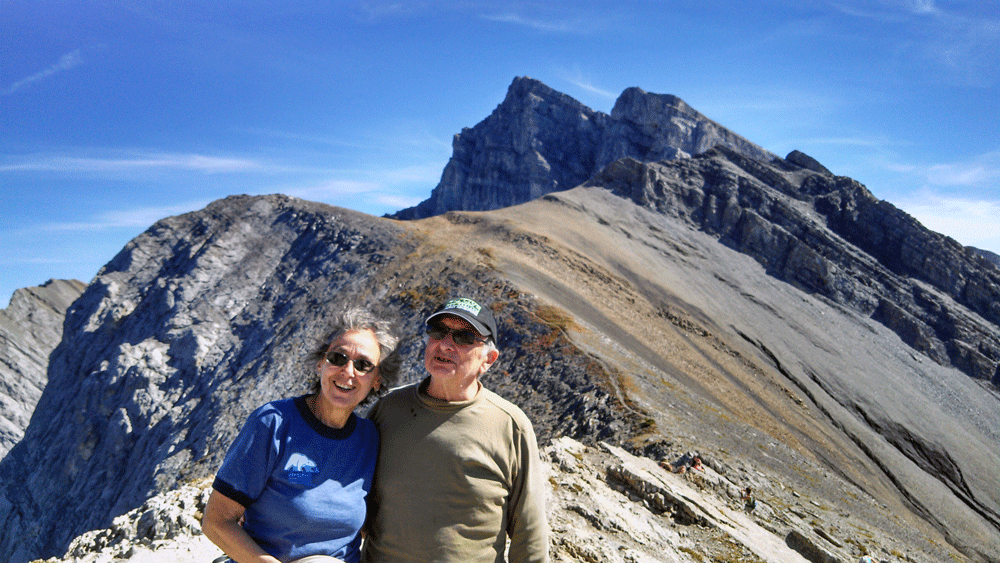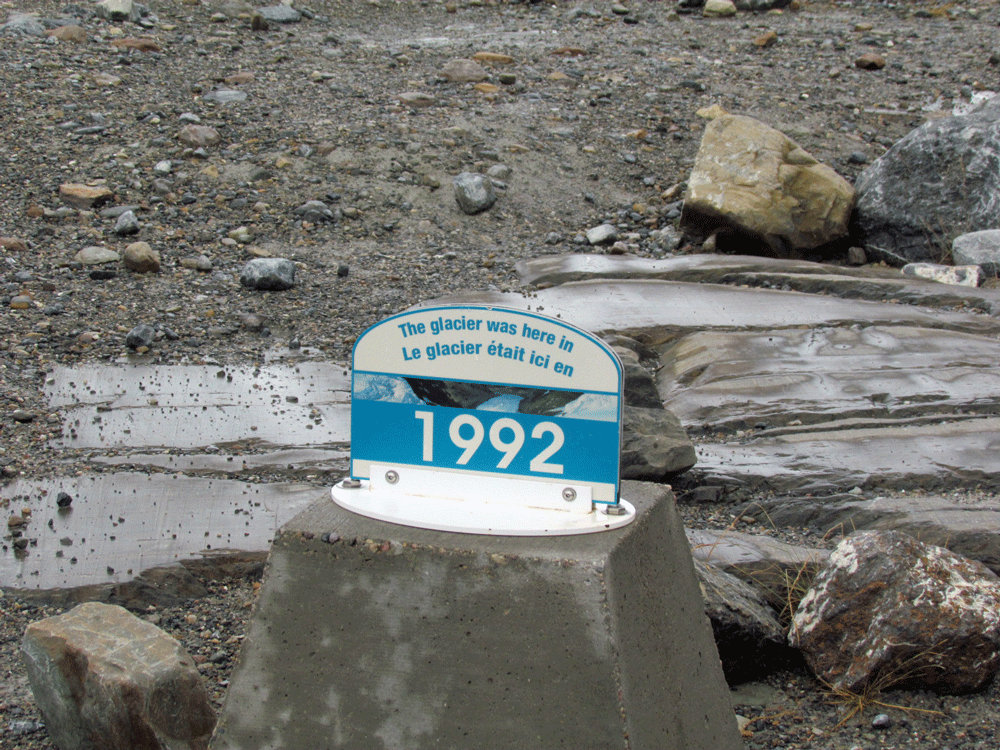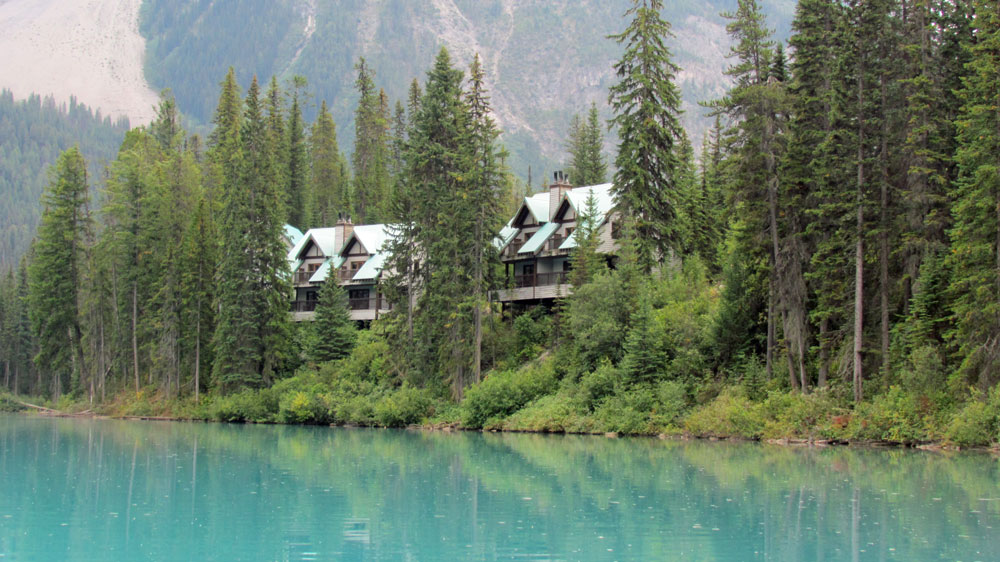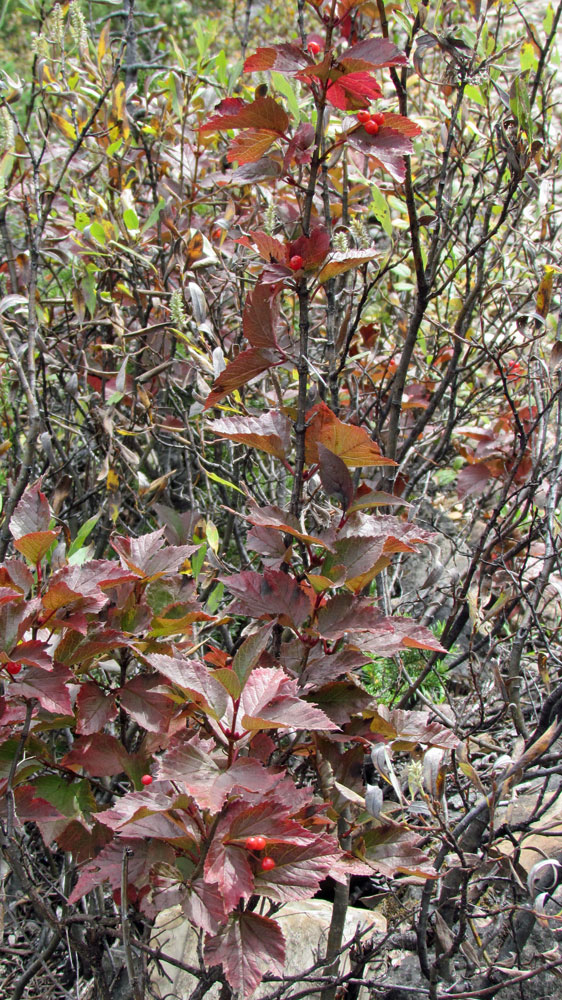We so enjoyed our Arctic boat venture in 2011 that we made a return trip, arranged by OneOcean Expeditions. Having already visited the east coast of Greenland, we headed for the west side. The idea was to make the famed Northwest Passage, for centuries the goal of explorers, primarily British. It was not until 1903-6 that the Norwegian Roald Amundsen finally succeeded. But the ice-clogged route has yet to prove of commercial value. Even today, with warming temperatures, there are only a few summer weeks when the passage is feasible. The story of the exploration has been told many times. The classic book is probably Pierre Berton’s The Arctic Grail, but there are many others. Some were written by the original participants--those who survived.
THE BOAT TRIP
On August 14, charter flight took us from Ottawa to Kangerlussuaq, a settlement on Sondre Stromfjord, in SW Greenland. There, after a brief bus tour, we took a Zodiac to board Akademik Ioffe. This Soviet vessel was named after a famed Russian scientist. The ship was built in Finland, completed in 1989, just in time for the end of the Cold War. It is described as a research vessel, but may have been intended to detect U.S. submarines. It is 60 feet wide and just under 400 long. In smooth water, with both engines running, it can make 14.5 knots. Its passenger capacity is 96. The crew, about 60, are mostly from a single Russian city, Kaliningrad. It has about a dozen Zodiacs, each with a 60 h.p. Yamaha outboard.
After debarking the Zodiac, we headed to cabin 447, our home for the next 11 nights. It had two beds--three if you pulled another one down. We found it small but comfortable. We shared our bathroom with an adjoining cabin. We could have had a private one for an extra $3000. The ship is smaller than Expedition, which we took in 2011, and the food was merely adequate. The main drawback was the absence of a single meeting place: for lectures and slide shows, the group had to be divided between the dining area and an overheated “presentation room.” The ship, which was remarkably steady, did provide a comfortable library, sauna, hot tub and icy plunge pool. The captain kept open the bridge for the entire voyage, an unusual degree of access. The passengers were somewhat older than those of 2011. Canadians predominated, along with a number of Americans, Australians, Germans, Brits et. al. All on board were white adults except for one Inuit staff member, a 12-year-old boy of French and Japanese descent, and Sal, born in India but longtime resident of New York. Sal was the only passenger who had been with us in 2011.
The west coast of Greenland is more populous than the east: it has a few well-spaced little towns. We visited Sisimiut, then Ilullssat in the Jacobshavn Icefjord. Its population is about 4500 (more than twice that if you count the dogs); its name means “icebergs,” an abundance of which are produced by the nearby glacier. We walked there, through town, in a cold rain. The general temperature range was 50 degrees to freezing. This was summertime. The ship provided mud boots and insulating pants and tops. The snout of the glacier looked like a great ice mountain. It obstinately refused to spew out any bergs for us.
It was time to enter Davis Strait and cross Baffin Bay. We anchored in the lee of Disko Island to wait out rough weather, then launched onto the sea for two days to reach the east coast of Baffin Island. We passed an enormous iceberg, perhaps one mile by two; it rose several hundred feel to a flat top and looked like an island. Our first stop was the town of Pond Inlet population ca. 1500), known locally as Pondilet. Because we were now back in Canada, we had to pass through immigration. A couple of officials boarded to check us out. They typically fly up from Ottawa for a week’s tour for this purpose. Once our passports had been stamped, we climbed into the Zodiac to check out the town. It is frozen in eight months of the year. A ship was anchored to provide the fuel that had to last until the following June. Food arrives the same way. A big iceberg sat in the harbor. We were given an Inuit culture show, with acrobatics, music and a lip-pulling contest.
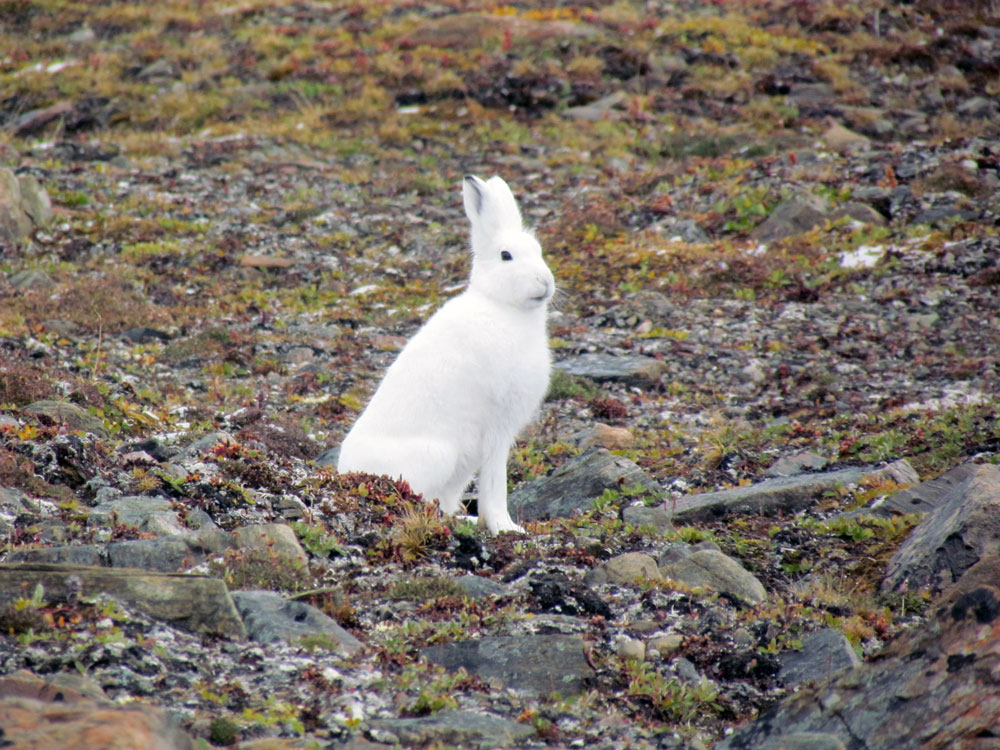
Now we headed north into the Passage proper. Our sail plan would take us west through Lancaster Sound, south into Prince Regent Inlet, west again through Bellot Strait and down Victoria Strait toward our terminus in Cambridge Bay. Do have a look at a map. These inlets, straits and islands form a bewildering archipelago that baffled explorers for centuries. We had picked up Richard, a Swede whose sailboat engine had given out. He was hoping to find another at Cambridge Bay. If we got there. Even with warming temperatures, ice was a threat. At 4:00 p.m. every afternoon the government issued a multi-colored ice report that could be displayed through a computer. One of these showed an ice mass on the west end of Bellot Strait. This news moved me to a limerick:
Monday’s report on the ice
Wasn't entirely nice.
We may have to shell it--
The exit from Bellot--
Or else visit Pondilet twice.
I entered this in the ship’s polar limerick contest, where it unaccountably failed to win so much as an honorable mention. Judges are fallible.
We had adjusted to shipboard routine. Meals at 7:30, 12:30, 7:30, unless modified by weather or wildlife sightings. Shore excursions when possible--they were somewhat limited by the ice, which was more widespread than the previous year. But there was always plenty of activity on the ship. While I was in the library, Susan was having massages, venturing into the sauna and hot tub, taking a watercolor class, learning more about photography and talking at least once to everyone else on the boat.Many passengers had been to polar regions before, and bubbled with enthusiasm. We had “presentations” most mornings and afternoons. Many polar experts were among us. Kari Herbert, daughter of the great explorer Sir Wally Herbert, spoke on the subject of her recent book, Heart of the Hero, about the wives of the polar explorers. Kari started her first Arctic winter when she was ten months old: she spent four years with her parents in a small settlement in northwest Greenland. Her husband, Huw Lewis-Jones, a geographer and mountaineer, was another “presenter.” So was a world authority on polar bears, Matthias Breiter. Then there were two young Canadian storm chasers, who showed videos of hurricanes and tornadoes. They were filming for the Canadian film channel and were always running around the ship for shots. They seemed never to sleep. And there were Karen Bowerman, a British journalist, filming for the BBC, and Katie Murray a young Scottish woman with a charming accent, who gave a talk on how not to go insane during those long, dark and cold Arctic winters: games, skits, journals and such. Unfortunately a family emergency forced Katie and her accent to leave the ship in Pond Inlet.
Lancaster Sound was easy going. We spent a few hours on the world’s largest uninhabited island, Devon. Its uninhabitation was unsurprising, given its utter barrenness. (We had seen no trees since Greenland.) People did try to live there at various times; a few desolate wood buildings and a graveyard remain. We walked about and saw a peregrine falcon and an Arctic hare. The hare was very white and seemed to be posing for our cameras.
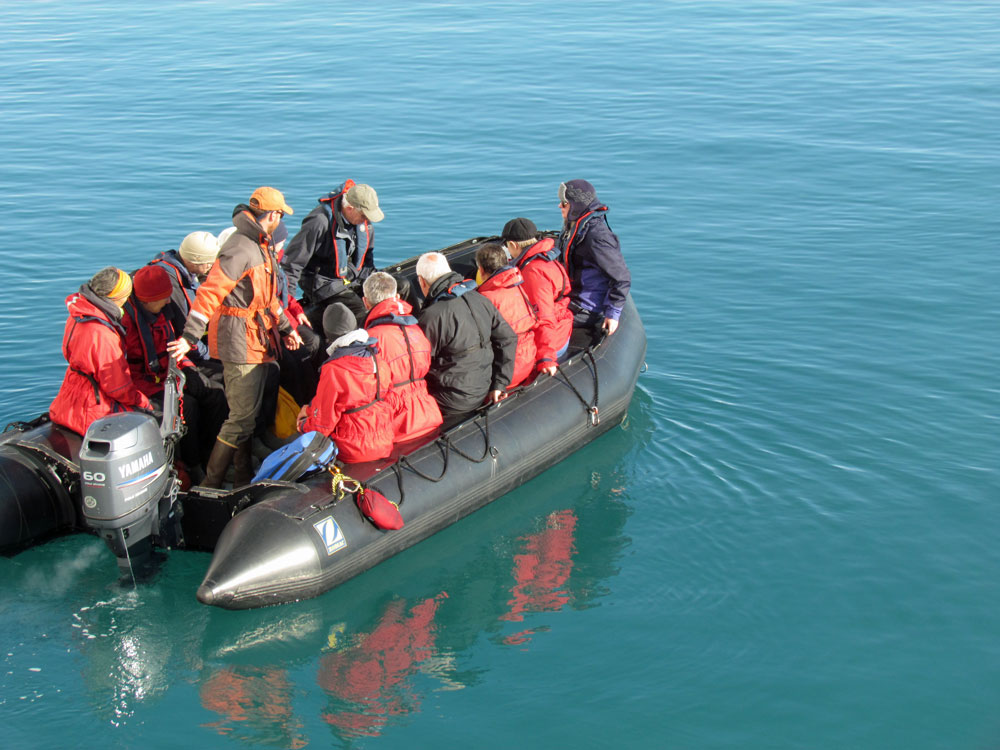
It was now August 21, and the sun shone, when possible, for more than 19 hours. A month later it would be 12 hours, a loss of about 15 minutes each day. Ice reports changed daily. Bellot seemed possible only with an icebreaker, so we requested one. Zodiacs took us around part of Prince Leopold Island. One side was guarded by striated mud cliffs, about 900 feet high. “Large numbers of Thick-billed Murres, Northern fulmars and Black-legged Kittiwakes breed on the cliff ledges, arriving in the vicinity in May or early June and departing by mid-September” (Wikipedia). Past them we caught sight of two polar bears walking about on a snow slope. Sailing was slow that day, and it was not until after dinner that the Zodiacs took us to the place I had most wanted to visit, Beechey Island.
Most famous by far of the Northwest Passage attempts was that of Sir John Franklin, in 1845. None of the 129 men survived. For years his wife (widow), Lady Jane Franklin, propelled rescue expeditions, which failed. The Scotsman John Rae did find evidence of what happened, but it included cannibalism, and the British public, including Charles Dickens, would have none of it. Franklin had spent his first winter on Beechey, where the graves of the first three men to die were soon found. In 1984 the bodies were exhumed. Their hair showed traces of lead. Thus the prevalent theory that the expedition perished in part because of poisoning from improper soldering on their tinned food.
The graves remain in Beechey, augmented by a fourth, for one of the failed rescuers. The site is very somber. A few inches of snow covered the stony ground. Huw, who had not been here before, brought along some bottles of whiskey, which we drank in paper cups in tribute to Franklin’s men and all the others who had braved these hostile shores.
Ice still blocked Bellot Strait; without assistance we would have to end our trip at Resolute and forego the rest of the Passage. But help was on the way. The Canadian icebreaker Henry Larsen was not only available but eager to clear our way. There was a political side to this alacrity:
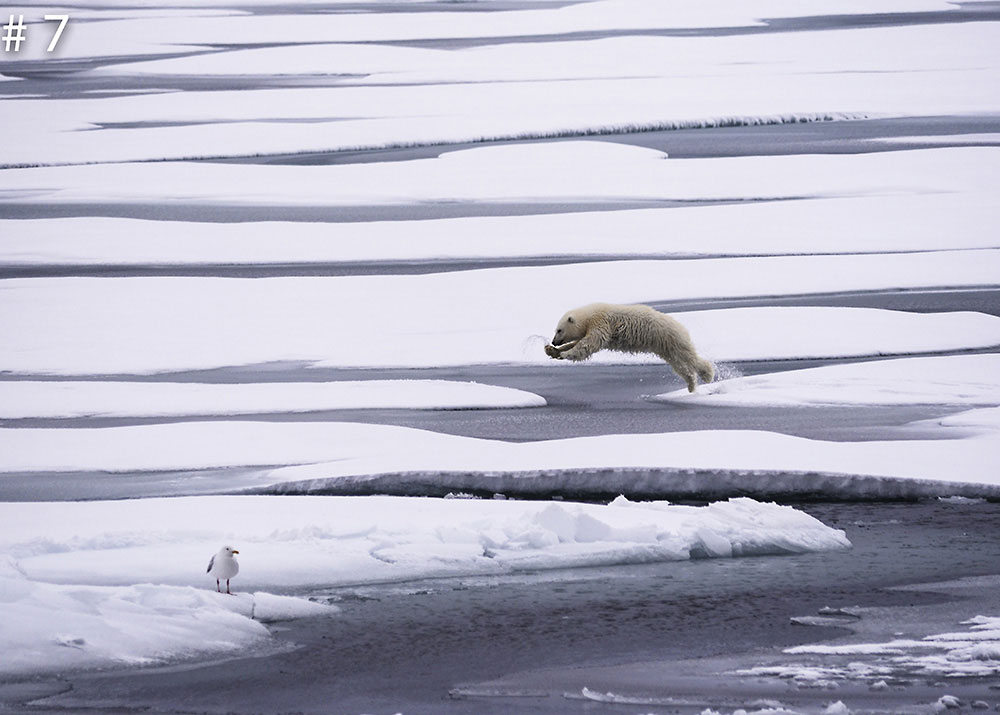
“Further complicating the situation, the US opposes Canada's claim that the Northwest Passage constitutes ‘internal waters’ which foreign ships require permission to enter. Instead, the US insists the waterway is an ‘international strait’ through which foreign ships may pass without constraint.
“However, on the two occasions that US ships have sailed the Northwest Passage without seeking permission, they either accepted assistance from a Canadian icebreaker or agreed the voyage would no affect the legal dispute. In 1988, the two countries agreed that the US would always seek permission for transits by its coastguard icebreakers, which Canada would then always grant.” [from the Web, somewhere.]
The following morning the Larsen caught up with us, to great applause. It carried a helicopter to scout the waters ahead. Bellot Strait is extremely narrow, just 0.4 miles across at one point. Its southern side is the northernmost point in the North American continent. It is not dramatic, with low hills rather than mountains on the margins. The current is strong, and ships usually go against it, like airplanes taking off into the wind. But we just followed the Larsen, and the current was with us. Only at the end did the ice require the breaker. We got through in 90 minutes, half the normal time. Three brave sailing craft trailed in our week. Having done its job, the Larsen turned back north.
One objective remained: King William Island, where most of Franklin’s men had perished in a southward venture toward safety (they would more wisely have headed north). Ice, still a problem these days, prevented a Zodiac landing, although we came close enough to appreciate the barrenness of the terrain. Then we were in Cambridge Bay, our last stop. This inspired me to another non-winning limerick:
There once was a ship called the Ioffe
With many amenities on offer.
On her we would stay,
Long past Cambridge Bay,
But there we will have to get off her.
So we flew back to southern Canada, Edmonton. The plane stopped to refuel in Yellowknife. I had always wanted to visit this flat, watery, mosquito-plagued destination. Now I can say I have done so. The place does have some trees, the first we had seen in more than ten days.
Note on kayaking: we had hoped to repeat our experience of 2011, when we had glided among icebergs in calm water. But by the time we signed up, all the kayak places had been taken. Just as well: the kayakers got out only twice, and just to follow the zodiacs to shore. The water was rough, quite different from the smooth clarity of the Greenland fjord in 2011. Not worth the $695 per person charge.
BEFORE
A few hours after leaving New York we were having lunch in Toronto with Joann Trypuc. We had met her on the 2011 cruise, and she had gone to Peru with Susan in October of the following year. Also with us was Jeff Pychel, another contact from 2011. He is a travel agent and arranged most of this trip for us. It is very useful to make friends with Canadians. Joann drove us around town, and we took a boat to Toronto Island, very green and pleasant. We visited museums: Inuit and, of course, textile. After two days with Joann we took a 4.5 hour train ride to Ottawa. At 6:30 the next morning we joined our prospective passengers for a bus to the airport and our charter flight to Greenland.
AFTER
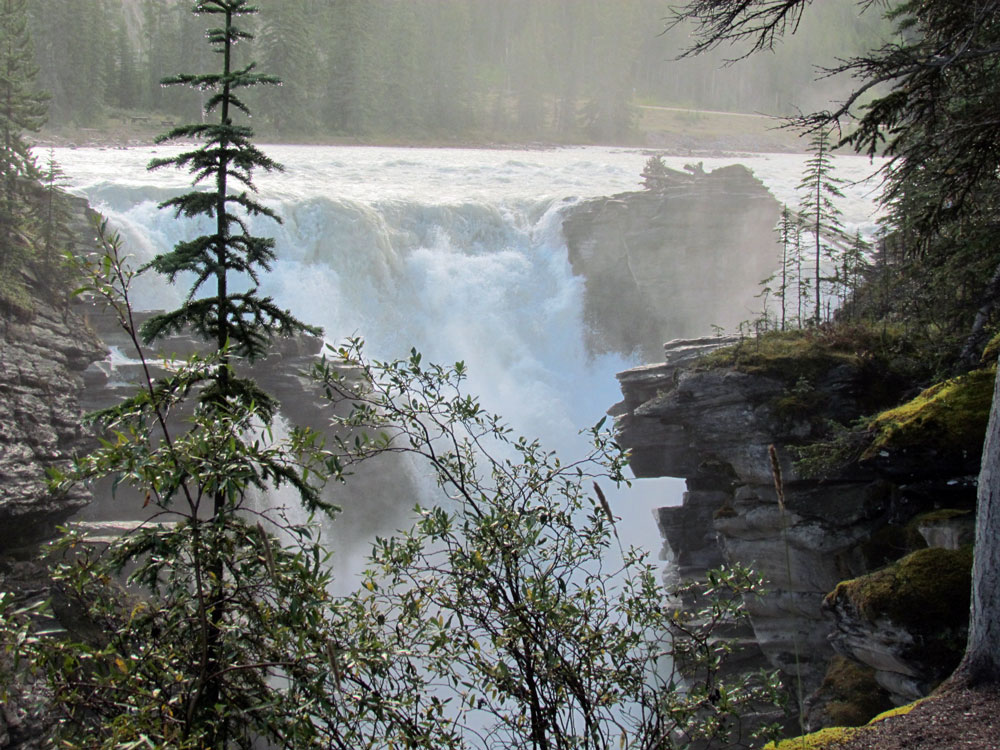
In Edmonton we stayed with Cheryl Newton and her husband Roger. Yet more travel connections, though not from the Arctic. We had met them in February at the Black Sheep Inn, in Ecuador. All Susan knew was Cheryl’s first name and that she was a pet therapist in Edmonton. But how many of these could there be? Using the Web, Susan soon located her. Cheryl and Roger were wonderful hosts, as was their Labrador, Macy. Macy’s task had been to breed service dogs. She produced 37 of them, but is now retired. Edmonton is an attractive city straddling a wide river, but Cheryl and Roger could not persuade us that you get used to the winter darkness, cold and snow.
We rented a Chevy Spark--four doors, but just enough room for us and our luggage--and headed west to the Rockies. Neither Susan nor I had been there for many years and had partly forgotten how beautiful the country is. Jasper is a nice, small touristy town and rather expensive, like the rest of the area. It rained much of the two full days we spent there. We recommend the Raven restaurant. Very good food, though tables can be scarce. One day we drove to the glacial Maligne Lake. The lake is 14 miles long and is the biggest in Jasper Park. We took a boat ride most of the way down (south) to Spirit Island, a lovely forested point that is an island only two weeks a year, in the highest water. It gives a splendid view of the surrounding mountains, including two that are jointly known as The Sweater Girl. Another excursion took us beneath the formidable North Face of Mt. Edith Cavell, with a great view of its glacier--receding, like most others.
The nasty weather slowly broke as we drove south to Banff. On the way we visited the current snout of the Athabasca Glacier. This was well over a mile up from the highway, the site of which the glacier once crossed. This was a big weekend in Canada, coinciding with our Labor Day. Banff was busy, although as in Jasper there were some lodgings still available. We had breakfast in nearby Canmore with Cheryl and Roger. The previous day Roger, who became a strong mountaineer in his late 40’s, had climbed the Southwest Ridge of Mt. Temple. This is a popular route; it doesn’t require a rope but is exposed and hazardous. Foul weather meant that this normally crowded route had no other summiteers. Roger suggested we hike up Mt. Haling--another of those “moderates.” I had scraped my knee while on the Ioffe. It seemed a mere bruise, but with in hour my knee had the dimension of a small grapefruit. The expected improvement was slow to come, and my condition dented our plans: no 10-hour hike to see the Burgess Shale; no rafting in the Fraser Canyon. But Mt. Haling was a very popular destination. In the holiday good weather the trail was followed by families, including babies being carried, and dogs of all sizes. Nevertheless it was consistently uphill. Thus I was feeling pleased when, after more than 2000 feet of ascent, we reached a saddle with superlative views on all directions. There we stopped. And I am glad that we did, because on the way down my uninjured leg began a strenuous protest. It had grown tired of doing so much of the work. Several times I lost my balance and toppled over, but broke only the band on my wrist watch. Subsequent ventures in the area were less demanding. Highly recommended: Johnston Canyon Falls. A river winds deep through spectacular walls. Easy (and popular). Similarly: Moraine Lake: small but truly spectacular, ringed by gorgeous mountains.
West (slightly) into British Columbia and Emerald Lake Lodge in Yoho National Park. It’s really a resort: pricey but so worth it that we opted for a third night. You drive to a parking lot and are shuttled a mile to the lodge. The lake is indeed emerald, with a milky tinge from glacial silt. The lodge is the only habitation on the lake and set nicely among the evergreens. Our first cabin was noisy, the but one given us instead was fine, with a great lake view. Good food, though again pricey, especially at breakfast. We walked around the lake and up 700 feet into Emerald Basin, close to one of the many local glaciers. Went canoeing too.
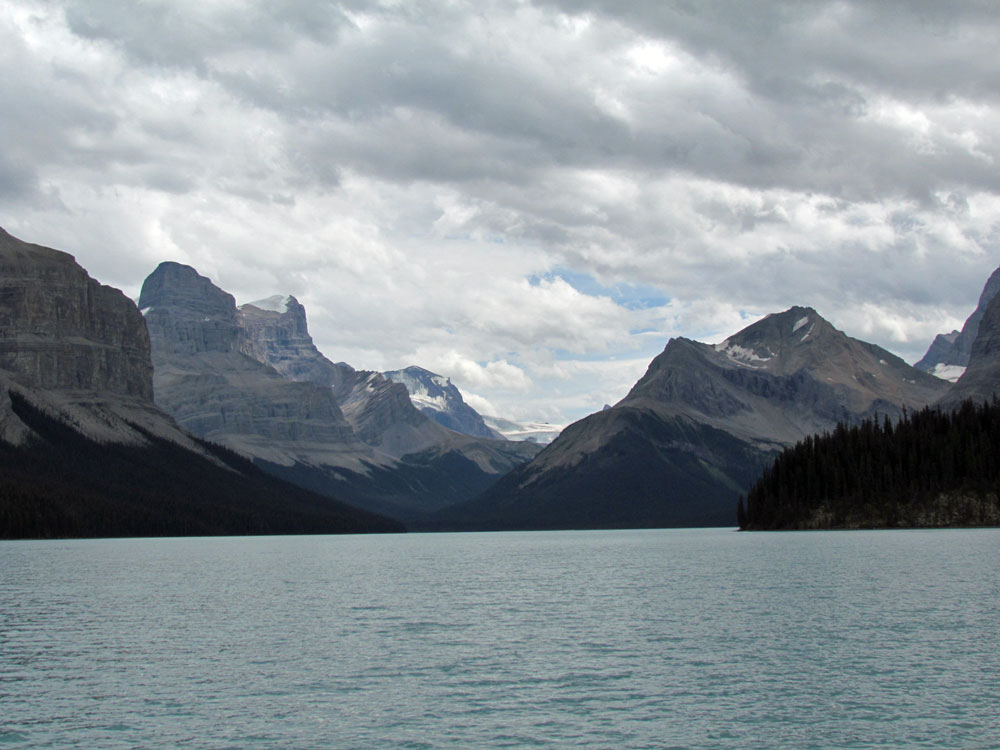
On the way south to Kamloops, we tried to book a room at the Best Western. The voice at the other end was faint, but it was plainly saying ”$282.” When I demurred, the price came way down. The room was actually a suite that the hotel had left on its hands. We had a very good dinner that evening with Barb Donaldson, yet another friend from 2011.
In contrast to this luxury, we spent the next night at the Charles Hotel in Boston Bar, en route to Vancouver. There are few options in the area, and Mrs. Sin, the diminutive Chinese woman in charge, wasn’t sure that she wanted to take us. “Smoking is very bad,” she said.
“I have never smoked.”
“We had guest from Germany. He did not want to pay.”
“We’ll pay now.”
“Smoking is very bad for room. $150 fine to clean. No pets.”
“Here is my Visa card.”
“No pets. No smoking.”
After providing profuse information, including my home address and driver’s license, we were admitted. The room was a lot cheaper than Emerald Lodge, but had no view. Or an appealing place to eat. At a grocery served by a man from New Delhi, we invested in a bag of spicy chips. These we took into the hotel’s Pig’s Ear Saloon, where we consumed them for supper, together with beer and wine purchased from Mrs. Sin’s son.
A rainy night was followed by clearing weather. At Boston Bar we took the gondola that descends across the river at a steep (30-degree) angle. The trip gives great views of the river. At one point, railway construction provoked a landslide that drastically narrowed the channel. The current was too strong for the salmon to fight their way upstream to spawn. They now have their own tunnel for this purpose.
By afternoon we were in Vancouver, the first city we had seen in some time. We stayed in the home of Mike Wortis, my close friend from high school and college. Mike and I had climbed together in many places, among them Peru and Afghanistan, well as the nearby Selkirks (back in 1955). Staying with Mike this academic year were his daughter Rachel (a physicist like Mike) and her husband and two sons. Mike and I did not renew our climbing career, but with Susan and Rachel we took a lovely walk to Whyte Lake. Small but beautiful, it feels like wilderness although it is scarcely out of the city. Vancouver was a lovely place to end this lovely trip.
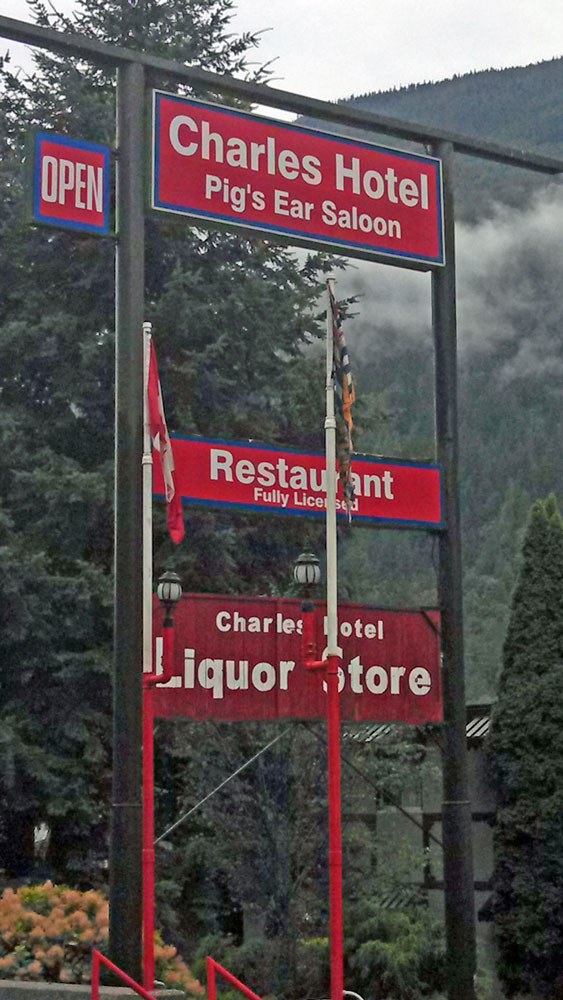
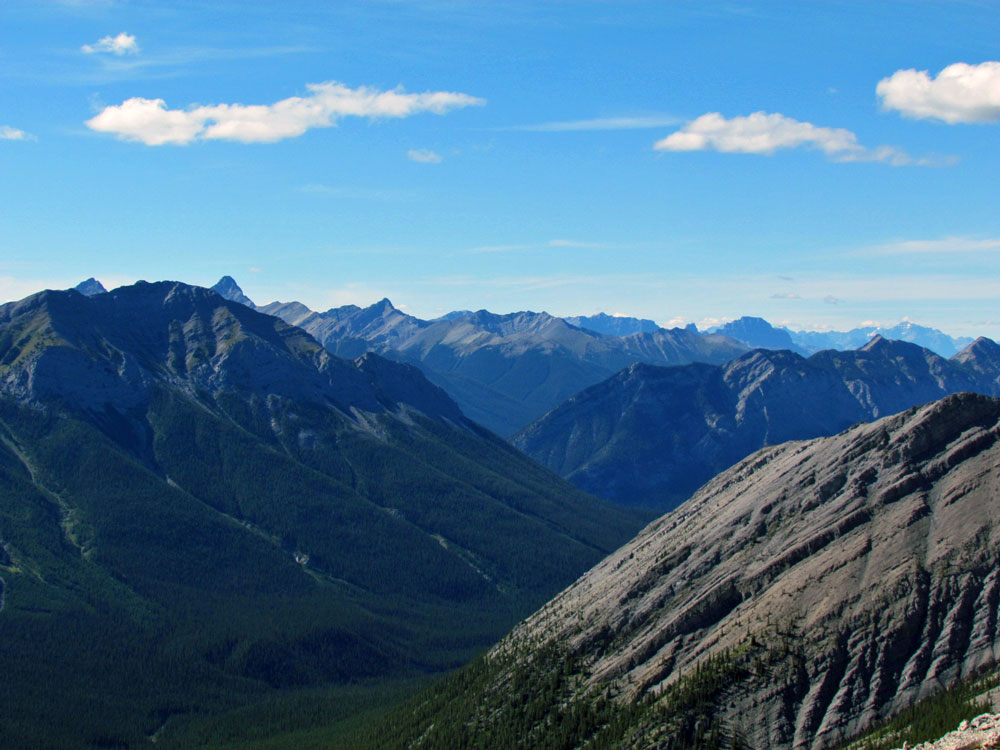
Some web sites:
Matthias Breiter (bears): breiterphoto.com
Richard Tegnér (Swedish sailor): northwestpassagerichard2013wordpress.com
Stormchasers: http://stormchaser.ca/Arctic_2013/Arctic_2013.html
Carolyn Monastra (photographer): WitnessTreePhotography.com
